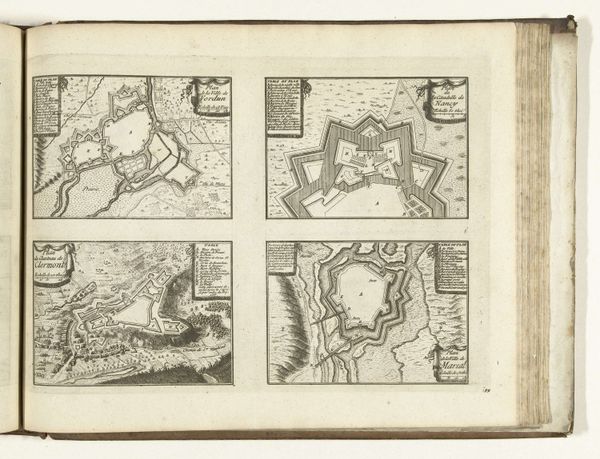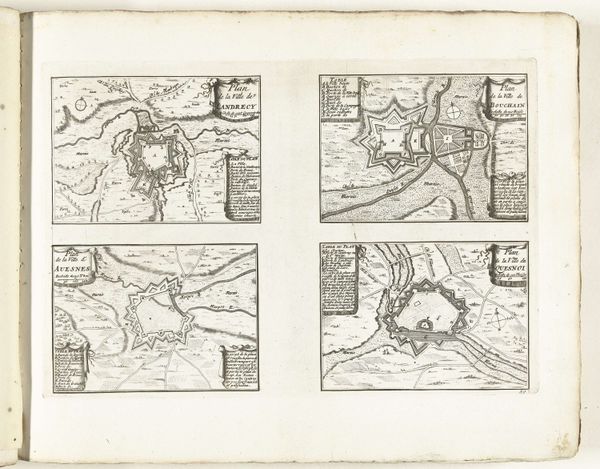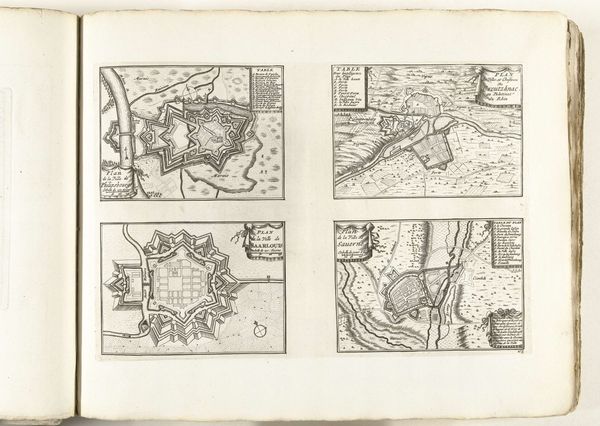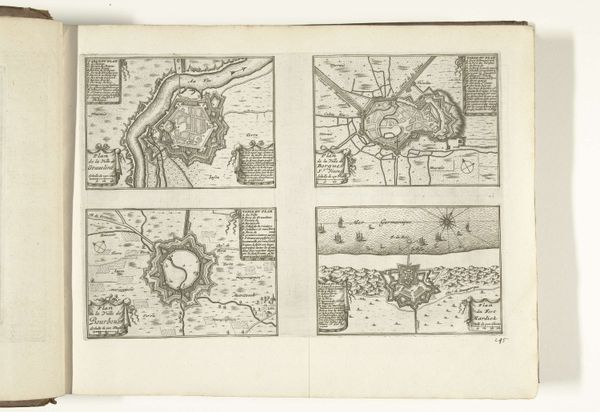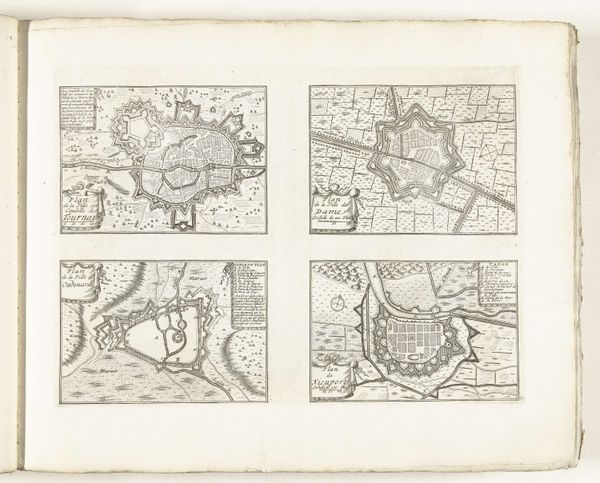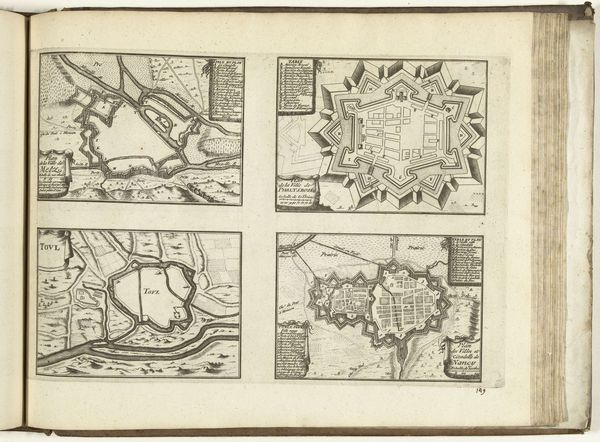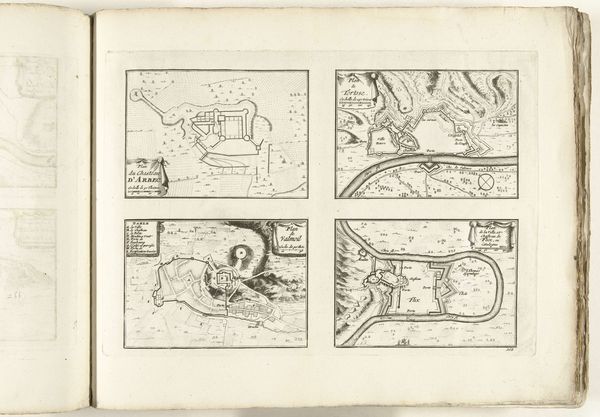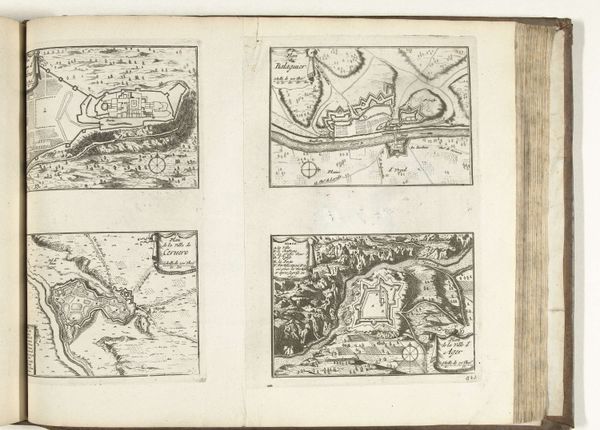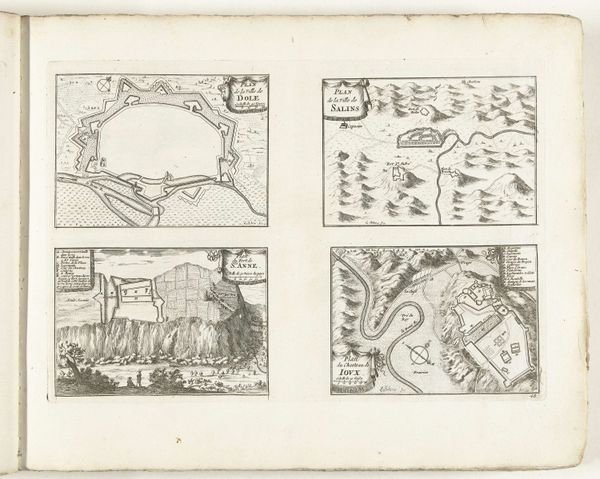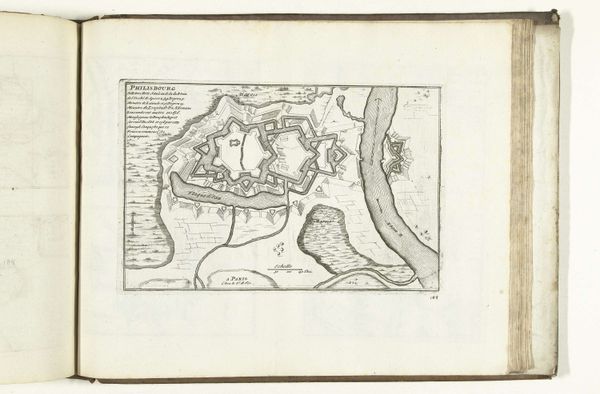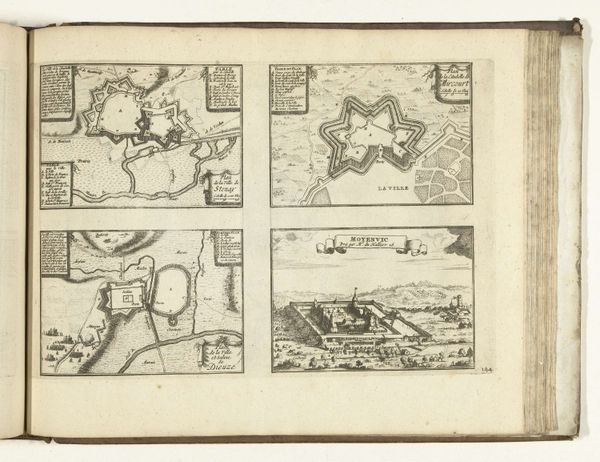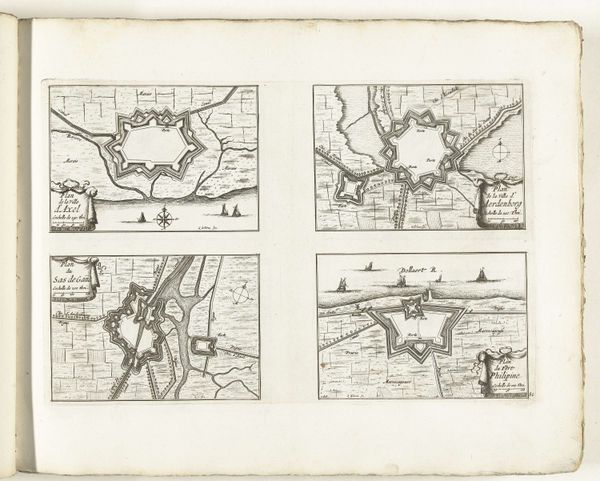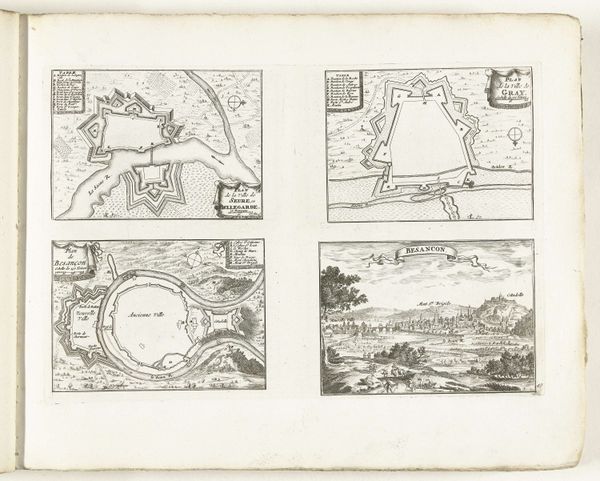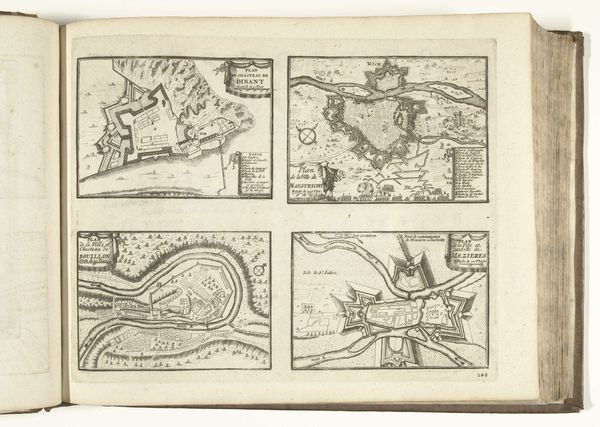
Plattegronden van Limbourg, Cambrai, Condé en Philippeville, ca. 1702 1702 - 1703
0:00
0:00
print, engraving, architecture
#
baroque
# print
#
cityscape
#
engraving
#
architecture
Dimensions: height 257 mm, width 347 mm
Copyright: Rijks Museum: Open Domain
Curator: Look at this detailed print titled "Plattegronden van Limbourg, Cambrai, Condé en Philippeville." It dates back to the early 1700s, showing various city plans as seen from above. All are tucked into formidable fortresses. It's fascinating, a starkly different style to what we are used to now. Editor: My first thought? Anxiety dreams mapped onto paper. Those starburst fortifications… they look less like defense, and more like the cities are desperately clinging to something, fearing invasion from everywhere all at once. Are they reflections of turmoil or aspirations for security, these spiked perimeters? Curator: Absolutely. I imagine a turbulent Europe at this point, reflected through anxieties rendered visible. As an engraving, each line has an extraordinary degree of precision. And although a printed image, each town would have been originally surveyed by hand, its borders, land, and architecture noted carefully. The architectural elements demonstrate clear Baroque influences, emphasizing scale and geometry to project power, but now captured and rendered as very small and flat. Editor: The psychological weight is interesting. Think about the circle— a symbol of wholeness, safety. Then someone decided no, that form must be weaponized! Jagged edges create a symbolic disruption. These cities were creating hard, visible defenses against outside forces; it must have really impacted their inhabitants. These aren't gentle walled gardens. They show an effort to exert dominion, but from a posture of paranoia. Curator: Exactly. It shows how deeply human psychology informs the creation of our surroundings. It’s more than just city planning, but visual narratives. And you notice they are placed in relation to other topological features. For example, the plan for Limbourg sits astride a series of streams and estuaries, showing how the waterways dictated and impacted defenses. Editor: Makes you wonder about how future archaeologists will read our own city plans... the rings of suburbia, the grids of our downtown cores. The imprint we leave is not just on the land, but within cultural memory itself, an engraving if you like that outlasts all physical structures. Curator: Indeed. This simple engraving manages to reflect ambition, fear, and identity so powerfully, and over time, that's truly powerful! Editor: Gives a new layer to think about what makes for home, right?
Comments
No comments
Be the first to comment and join the conversation on the ultimate creative platform.
